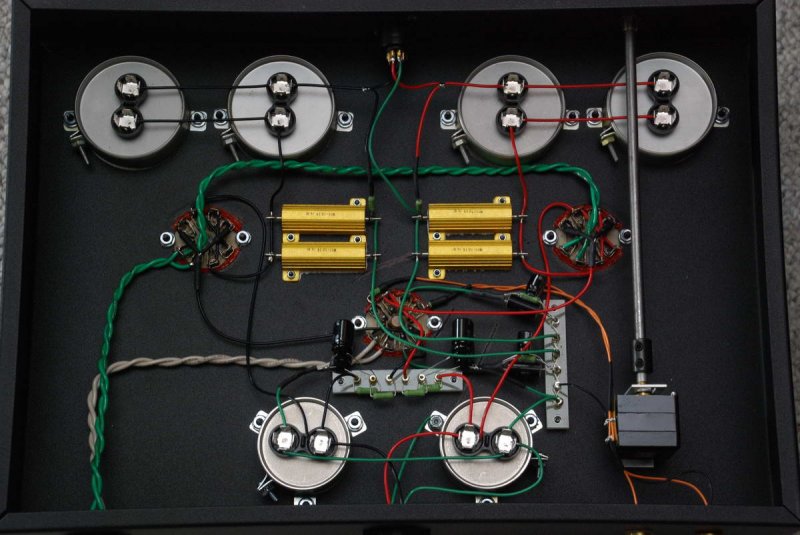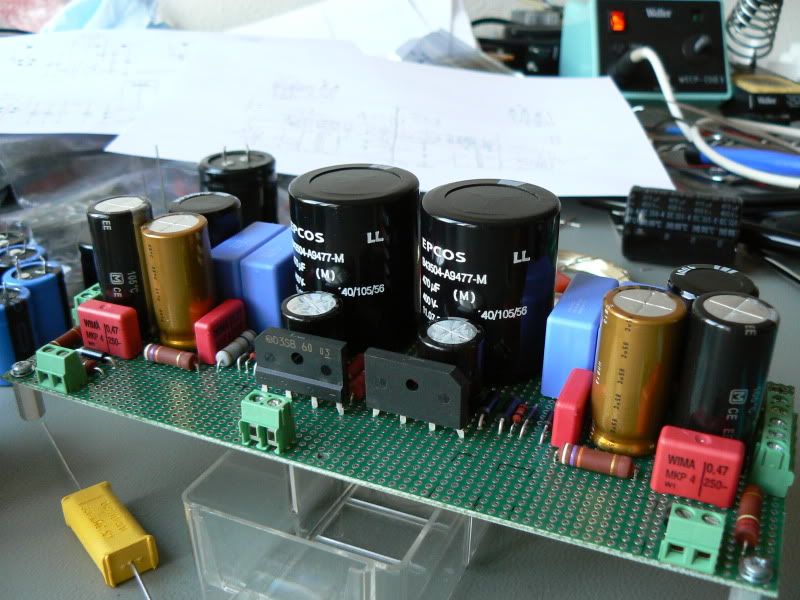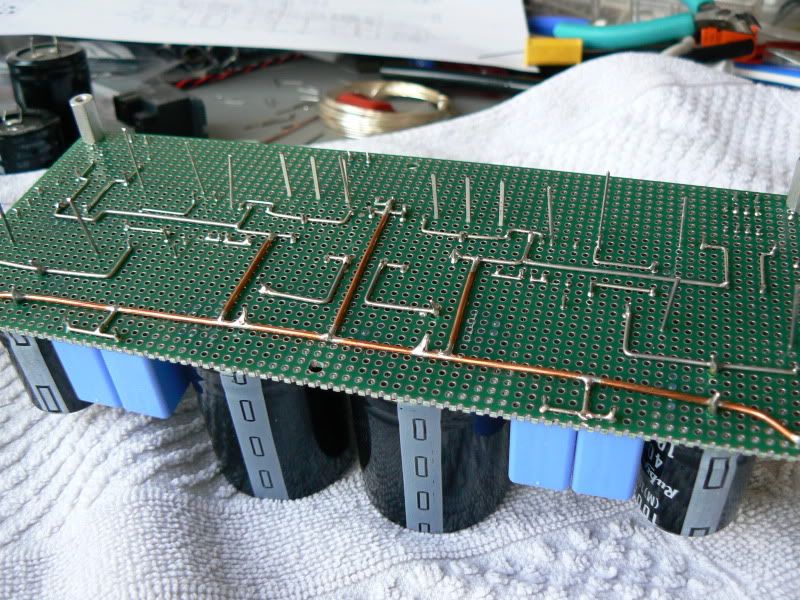mojo
100+ Head-Fier
- Joined
- Sep 21, 2005
- Posts
- 488
- Likes
- 14
Quote:
Thanks, that was really interesting. I guess it must be slower but the results are lovely. I have see some more complex "helping hands" type things which have a cushioned hand to hold components in place while soldering, which sounds good as it saves your fingers or the tape from melting.
Can I ask, how do you get the long runs of solder so neat? I find it hard to do long runs like that, although it might be down to using an 18W iron. I really need to get a better one. Normally I bend long component legs over to make it easier.
| Originally Posted by TzeYang /img/forum/go_quote.gif My soldering method is quite contrary to conventional soldering methods. Not sure if you guys are interested but I’ll post it anyway. |
Thanks, that was really interesting. I guess it must be slower but the results are lovely. I have see some more complex "helping hands" type things which have a cushioned hand to hold components in place while soldering, which sounds good as it saves your fingers or the tape from melting.
Can I ask, how do you get the long runs of solder so neat? I find it hard to do long runs like that, although it might be down to using an 18W iron. I really need to get a better one. Normally I bend long component legs over to make it easier.


















